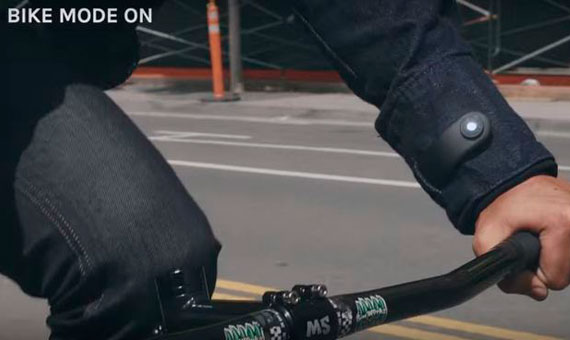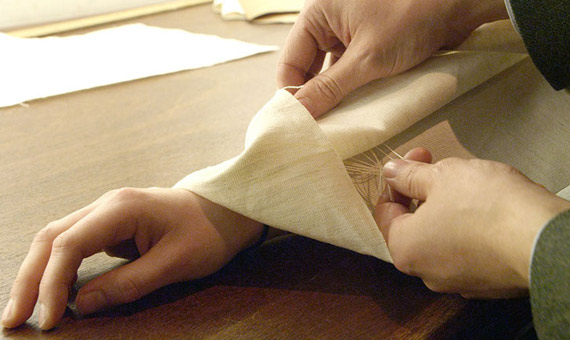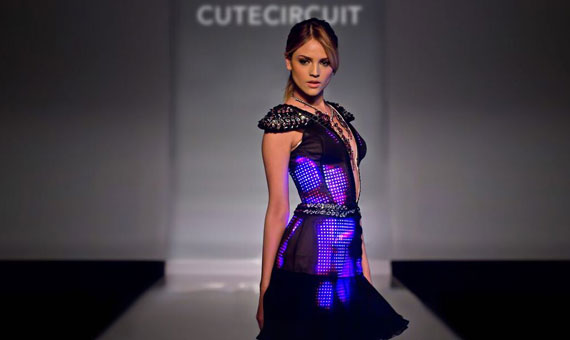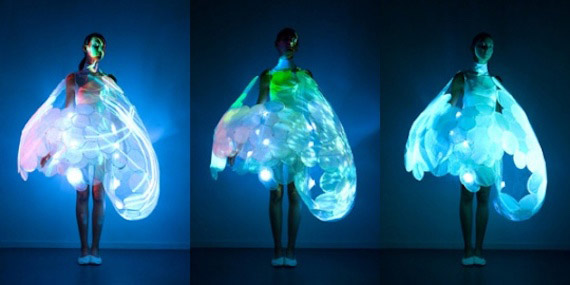This fall it will be possible to answer a call just by making a simple gesture on your jacket. You will be able to receive GPS directions, skip a song or turn up the music volume without having your mobile phone in your palm. This is the future—very near—being promised by Google and Levi’s, who have designed a denim jacket whose sleeve works as a device to control a smartphone. This is the future that smart clothes are leading us towards, a new field in which wearable technology promises to leapfrog that of the activity wristbands and accessories. “Smart phones and smart watches are only the beginning. Wearables become disappearables as the device becomes the garment itself,” says the consulting firm Cientifica Research.

One of the characteristics of this new smart clothing is that it does not appear to be so. Thus, Google’s denim jacket will not look like Darth Vader’s breastplate; it has neither buttons nor screens. “There can’t be blinks on the jacket, we don’t do that,” explained Ivan Poupyrev, the project manager at Google, at a conference. The secret lies in 15 conductor wires that are interwoven in the fabric and that confer sensitivity to touch. Through an app installed on the smartphone, the user can associate functions with five hand gestures on the sleeve. The jacket is connected to the mobile phone by Bluetooth, using a camouflaged device in the form of a button belt-loop, the only part that must be removed before putting the garment in the washing machine.

Smart clothing has already been with us for some years, especially with applications in physical exercise and health. Adidas and Nike were the first to market clothing-attachable sensors, after which other brands followed suit and integrated the devices into clothing, until finally, in this latest generation, the garment itself is the sensor, thanks to the use of textile electrodes or conductive polymers that are woven into the fabric.
Clothing that electronically clasps the wearer
Sport is not the only goal. Other firms such as CuteCircuit explore interactive applications that are more playful or artistic, such as luminous garments, clothes that transmit sound or that electronically clasp those who wear them. Those in charge of this London brand, Francesca Rosella and Ryan Genz, point out to OpenMind that their garments do not have wires and do use tiny batteries, the size of a 50-cent coin. These creators claim that the perception regarding this genuinely wearable technology is gaining popularity. “We believe that everything that is in a box today, such as cameras, watches, etc., will be in smart textiles and garments in the future,” they predict. “Our clothes will become a second skin, an interface to the people and places around us.”

Smart clothing is the fourth industrial textile revolution, a sector that in 2025 will reach a sales volume of more than 130 billion dollars, according to Cientifica Research. However, engineers from the University of Pisa (Italy) Aurora De Acutis and Danilo De Rossi show another reality in the book Smart Textiles (Springer, 2017): “More than two decades have elapsed since researchers in this field have begun to work on e-garments achieving excellent results, but these findings have not taken off significantly in terms of market success and consumer adoption.”
For De Acutis and De Rossi, the key to these products catching on will be a change of focus, the transition from products inspired by the technology itself to others inspired by the human being; in other words, focusing on the needs of the end user, and not on what can be technologically done. Bothun suggests that the environment is conducive to the growth of available technology, including textiles, thanks to the development of the Internet of Things and connected devices, the proliferation of apps, consumer preference for sophisticated products and the interest of users in social connectivity and in real-time monitoring.
Wristbands, cameras and garments
Although the field of smart clothing is still gaining steam, wearable technology itself has entered into our lives with force. According to what Deborah Bothun, Global Director of Entertainment & Media at PwC Consulting has told OpenMind, “wearable technology is one of the greatest applications of the Internet of Things.” PwC produced a report on these technologies in 2014 and since then the adoption of technology has risen by more than double, from 21% to 49%, according to the 2016 update to the report.

Currently, the technology available is still restricted mainly to two types of formats: the devices to measure health parameters related to physical activity, especially in the form of a wristband, and smart watches that serve as an extension of the smartphone. However, this category also includes other accessories such as GoPro action cameras or the Google Glass smart glasses. This latter product, which went on sale in 2013 and had its production halted by Google in 2015 (after a lukewarm welcome and numerous criticisms for reasons of privacy and driving safety), is an example of how the public is still in the process of assimilating these technologies. However, for Bothun these devices are opening the way and the sector will continue to grow steadily, as “the market is not yet oversaturated.”
Javier Yanes for Ventana al Conocimiento
Comments on this publication